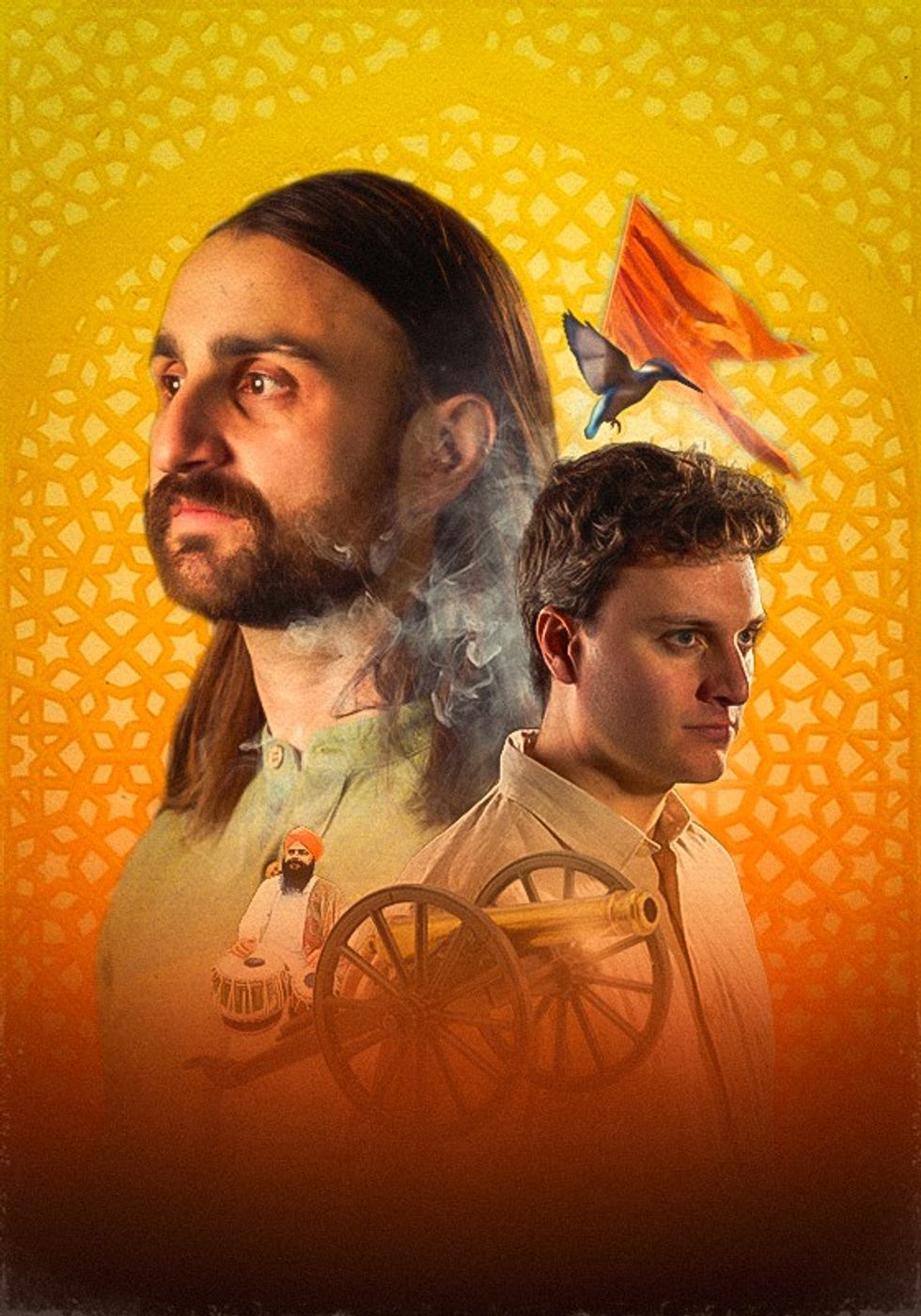Indian and Persian rugs set to go under the hammer
A KASHMIR carpet from the late 19th century has been included in a Christie’s auction due to be held on Thursday (28).
It is part of the auction of the “Art of the Islamic and Indian Worlds Including Oriental Rugs and Carpets”, has “state dining room” embroidered on the reverse and carries a price estimate of £25,000-£35,000.
These carpets are the carriers of culture, and their production is often vulnerable to political turbulence. In Afghanistan, for example, the carpet trade has been hit hard by the return of the Taliban.
Persian carpets became harder to get after the Iranian revolution of 1979 which brought Ayatollah Khomeini to power. In fact, those who escaped took their best carpets with them to sell abroad.
Commenting on the Kashmir carpet, Christie’s points out that “the weaving tradition of these extraordinary large carpets lies in the earlier Mughal court carpet production. Thought to date from the reign of the Mughal emperor Akbar (1556-1605), it continued through the reign of his son Jahangir (1605-1627) and that of his grandson, Shah Jahan (1628-1658).
“The court workshops were commissioned to produce large durbar, or ‘audience’ carpets which were displayed longitudinally before the throne in the palaces of the emperor.”
The design of the Kashmir carpet in the auction resembles fragments at the Philadelphia Museum of Art and the V&A in London.
They were “once part of an impressively large late 17th century Mughal Lahore carpet of lattice design that had reputedly been woven for the Chihil Sutun Palace, Isfahan. Constructed in 1647, it had been a pleasure pavilion built by Shah Abbas II (1642-66) in the middle of a large park, but which had to be rebuilt in 1706 following a major fire. That any fragments remain of that carpet is quite remarkable,” the auction house said.
There was a growing market for Kashmir carpets in fashionable Britain: “By the mid-19th century, there was a heightened demand from the new mercantile classes in Victorian England. By 1890, it had become so fashionable that Queen Victoria instructed John Lockwood Kipling, father of the poet Rudyard Kipling, to build a state Durbar room at Osborne House.
“Decorated by the master carver Bhai Ram Singh, the Durbar room was laid with a room-sized Agra carpet. While the present carpet was not part of the decoration of Osborne House or Windsor Castle, we can assume it had been commissioned for a similarly impressive setting, according to the repeated embroidered lettering on the underside, ‘the state dining room’.”
There are other notable carpets in the auction, among them a late 16th/early 17th century “Lotto” rug (£25,000-£35,000), probably Ushak, from West Anatolia; as well as a double niche medallion Ushak rug (£35,000-£55,000) of the same vintage.

Christie’s says of the former: “It is extremely rare to find the ragged palmette and vine border design set on an indigo ground in the known group of ‘Lotto’ rugs.” Also in the sale is a silk Heriz prayer rug (£10,000-£15,000) from north-west Persia dating from the third quarter of the 19th century.
“The execution and quality of this silk Persian prayer rug is exceptional”, the auction house said.
But these prices are relatively modest compared with those fetched by “magic carpets”.
“Some of the finest products of the weaver’s art – from Persia, India, China, Egypt or France – have soared to great heights in our salerooms,” said Christie’s. For example, a Safavid silk and metal-thread ‘Polonaise’ carpet sold for £3,895,000 on May 2, 2019.
“This rare carpet, made in Abbas’s capital city of Isfahan at the turn of the 17th century, is woven with a precious silk pile enhanced by extensive use of gold- and silver-wrapped thread.
“When it was offered in the Art of the Islamic and Indian Worlds auction in May 2019, it sold for more than six times its low estimate, breaking the auction world record for a ‘Polonaise’.”
And on April 15, 2010, the Comtesse de Béhague Kirman ‘Vase’ carpet fetched £6,201,250.
“‘Vase’ carpets are so called because of the representations of vases overflowing with leaves, stems and blossoms that very often feature in their decoration,” was the explanation. “They were produced during the 16th and 17th centuries in Kirman in south Persia, modern-day Iran, and offered skilled weavers an opportunity to impress with elaborate, intricate patterns and dazzling colours.”






 Naeli and the secret song
Naeli and the secret song









 Jamie Lloyd’s Evita with Rachel Zegler set for Broadway after London triumphInstagram/
Jamie Lloyd’s Evita with Rachel Zegler set for Broadway after London triumphInstagram/
 A compelling premise, layered and unpredictable charactersAMG
A compelling premise, layered and unpredictable charactersAMG Anyone who enjoys a gripping story with a diverse cast and unexpected twistsHarperFiction
Anyone who enjoys a gripping story with a diverse cast and unexpected twistsHarperFiction
 The Story Teller by Ley Roberts
The Story Teller by Ley Roberts Summer Exhibition coordinator Farshid Moussavi, with Royal Academy director of exhibitions Andrea Tarsia in the background
Summer Exhibition coordinator Farshid Moussavi, with Royal Academy director of exhibitions Andrea Tarsia in the background An installation by Ryan Gander
An installation by Ryan Gander A sectional model of DY Patil University Centre of Excellence, Mumbai, by Spencer de Grey
A sectional model of DY Patil University Centre of Excellence, Mumbai, by Spencer de Grey Rituals and Identity and Theatre of Resistance by Arinjoy Sen
Rituals and Identity and Theatre of Resistance by Arinjoy Sen
 An explosive new play that fuses biting satire, history and heartfelt storytellingPleasance
An explosive new play that fuses biting satire, history and heartfelt storytellingPleasance